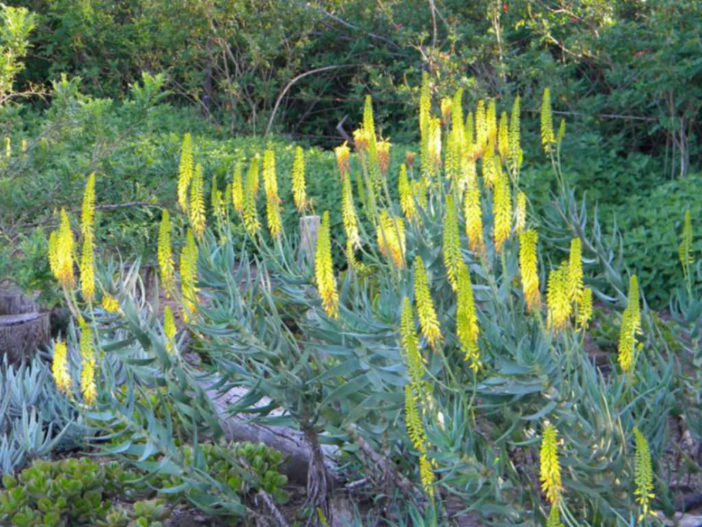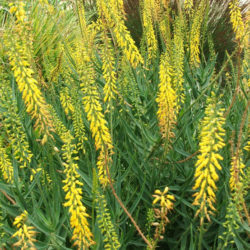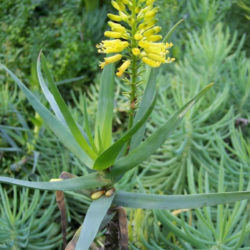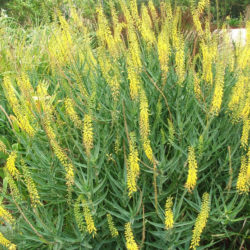Scientific Name
Aloiampelos tenuior (Haw.) Klopper & Gideon F.Sm.
Common Name(s)
Fence Aloe
Synonym(s)
Aloe tenuior, Aloe tenuior var. tenuior, Aloiampelos tenuior var. tenuior, Aloe tenuior var. decidua, Aloe tenuior var. densiflora, Aloe tenuior var. glaucescens, Aloe tenuior var. rubriflora, Aloe tenuior var. viridifolia, Aloe tenuior var. viridifolia
Scientific Classification
Family: Asphodelaceae
Subfamily: Asphodeloideae
Genus: Aloiampelos
Description
Aloiampelos tenuior, formerly known as Aloe tenuior, is a bushy succulent with numerous slender stems that grow from a large woody rootstock and narrow, lance-shaped leaves crowded in lax rosettes at the end of the stems. It grows up to 5 feet (1.5 m) tall with support with a spread of 6 feet (1.8 m). The stems are irregularly branched, semi-woody, and with prominent leaf scars. They grow to 10 feet (3 m) long and take root along nodes upon contact with the ground. Leaves are grayish-green with tiny white teeth along the margins. They are up to 6 inches (15 cm) long and 0.75 inches (1.9 cm) wide.
Flowers are bright yellow (although there is a red-flowered form called Aloiampelos tenuior var. rubriflora) and appear on slender, unbranched racemes throughout the year, mainly in winter. They are tubular, up to 0.8 inches (2 cm) long, and up to 0.15 inches (0.4 cm) in diameter. Fruits are small papery dehiscent capsules with a few tiny seeds.
Origin
Aloiampelos tenuior is native to South Africa. It usually grows in open grassland, shrubland, wooded areas, thicket, coastal scrub, and forest margins in Western Cape, Eastern Cape, KwaZulu-Natal, and Mpumalanga.

Hardiness
USDA hardiness zone 9b to 11b: from 25 °F (−3.9 °C) to 50 °F (+10 °C).
How to Grow and Care
Due to their hardiness and the wide range of flower colors, these slender succulents have become popular ornamental plants in South African gardens. The commoner species (such as, the more widespread Aloes of the Eastern Cape) are also increasingly grown in gardens overseas.
Climbing Aloes require a sunny, well-drained position and are particularly suitable for rockeries. The taller, climbing species are commonly planted along fences and boundaries, growing through the surrounding foliage. However, the lower, rambling species are better suited for rockeries, slopes, or terraces, which they will naturally cascade down over.
See more at How to Grow and Care for Climbing Aloes.
Varieties
Links
- Back to genus Aloiampelos
- Succupedia: Browse succulents by Scientific Name, Common Name, Genus, Family, USDA Hardiness Zone, Origin, or cacti by Genus
Photo Gallery
Click on a photo to see a larger version.


